007/ 50: “My name’s Bond, James Bond” #4 ~ Dalton, Brosnan and Craig (1987-2006)
Three (not) of a kind: Timothy Dalton (left), Pierce Brosnan (middle) and Daniel Craig (right) offered very different incarnations of 007 – and three very eventful passings-on of the Bond actor baton
For an entire generation (and-a-half) there’d only ever been two proper James Bonds: Sean Connery and Roger Moore. Loosely speaking, Connery had been the Bond of the ’60s and Moore the Bond of the ’70s and into the ’80s. However, by 1985 both the critics and the public had seemingly decided that, at the age of 58, Sir Rog should hang up the shoulder holster. They weren’t the only ones; both legendary Bond film producer Albert R ‘Cubby’ Broccoli and Moore himself agreed: ’85’s A View To A Kill would be his last Eon effort and he officially vacated the role the following year. For the fourth time then, surely the most coveted (certainly the most media-obsessively pondered on) role in all cinema was up for grabs once more – but who would grasp it and hold on to it now? (Indeed, this time around, the emphasis in that question perhaps should be on the ‘holding on to it’ part).
So, edging ever closer now to the conclusion of this blog’s season of all things 007 in celebration of Blighy’s finest‘s fiftieth anniversary on the silver screen (don’t worry, it’s not far off now), with this post – the fourth and final in the series looking back at the casting of the 007 role – we’re one step closer, peeps. But the story this post tells doesn’t actually start in 1986 – no, it starts way back when Sir Rog was firmly and happily ensconced in Bondage; to be precise, 1981.
For it was that year when a relatively young and, certainly when it came to screen acting, inexperienced Irish-born thesp met Bond’s head honcho himself, Cubby Broccoli, for the very first time – namely, one Pierce Brosnan. This wasn’t a George Lazenby-style meeting of deliberate aspiration, though, it was a perfectly cordial meeting made over dinner that, at the time, would profit neither party. The two met each other through shared acquaintance Cassandra Harris, whom at the time was playing Bond Girl ‘Countess’ Lisl in the 007 adventure Broccoli was filming, For Your Eyes Only (1981), and also happened to be Brosnan’s wife.
Over the years, myth-makers have liked to suggest that at this meeting Broccoli told Brosnan ‘one day he’d be James Bond’; whether he did or not is something that’s fun to speculate, but isn’t important. What is important, of course, is that eventually he did play the character, as is the fact it didn’t happen until nearly a decade after he expected to. Hailing from County Meath, Brosnan moved to London as a 10 year-old boy and shortly afterwards saw his very first film at the cinema – kismet-like, it was Goldfinger (1964).
.
.
Growing up, the handsome youngster drifted towards the boards and in 1975, as a novice actor, was plucked by Tennessee Williams himself to fill a role in the legendary playwright’s latest effort The Red Battery Sign. Making his film debut in the British gangster classic The Long Good Friday (1980), Brosnan moved with wife Cassandra to Hollywood in an effort to kick-start a movie career in the States. The result was him landing the lead in knockabout private eye TV show Remington Steele (1982-87), a role that saw him essay a charming, suave playboy type not a million miles away from Roger Moore’s James Bond. And then, as the popular comedy-drama reached the end of its several seasons-long run in 1986, Brosnan was tapped up by one Cubby Broccoli to replace Sir Rog and play the real thing.
This, however, is where fate first played a cruel hand in the Brosnan story. Recognising they now had a hugely hot property on their hands, Remington Steele‘s studio NBC decided to fulfil an option they had in the contract for the show they were about to cancel – by extending it to another final season. This left Brosnan very much up the proverbial creek without a paddle, for Broccoli baulked; he didn’t want to make a new Bond film (1987’s The Living Daylights) with a debuting actor who was appearing as a Bond-esque character in a TV show while the movie was in cinemas. Brosnan was let go by Broccoli and forced to film one final half-season of Remington Steele feature-length episodes – adding insult to injury, they didn’t even receive decent ratings. He’d had the 007 role in his grasp, but it had slipped through his fingers… to whom, though? Well, to an unlikely inheritor of the tux, actually.
There was very little in Timothy Dalton’s acting back catalogue that, many the layman might say, would suggest he’d become James Bond. But Cubby Broccoli had always had his beady eyes on him as a potential 007. As early as 1968 when Sean Connery had first extricated himself from Bondage after You Only Live Twice (1967), Eon Productions’ head honcho had looked at Timbo as a replacement for the next instalment On Her Majesty’s Secret Service (1969). Wisely, he swiftly removed himself from the running and the part, of course, ultimately went to George Lazenby. Wisely? Well, Dalton was only 24 at the time – surely too young to play Fleming’s hero – and, in any case, although he’d only just made his cinematic debut in the critically acclaimed, Oscar-friendly drama The Lion In Winter (1968), movies weren’t his priority.
In fact, they weren’t for much of the next 20 years of his career. Dalton’s biggest love and biggest pull as an actor was always the stage. A native of Colwyn Bay, the Welshman had fallen for the acting bug after witnessing a performance of Shakespeare’s Macbeth at the Old Vic when he was a mere 16 years-old. After training with the Royal Academy of Dramatic Arts (RADA), he quickly established his name in classical stage roles, appearing in many of the Bard’s works (with both the Royal Shakespeare Company, or RSC, and in BBC TV productions), including Henry IV Parts 1 and 2, Henry V, King Lear, Love’s Labour’s Lost and Romeo and Juliet.
.
Man and wife, trouble and strife: Brosnan with Cassandra Harris at the For Your Eyes Only premiere (l); with producers Michael G Wilson and Broccoli as he agrees to become Bond (for the first time) in ’86 (r)
Perhaps, though, it was Dalton’s lugubrious and smouldering anti-hero performances in a feature film version of Wuthering Heights (1970), a Beeb adaptation of Jane Eyre (1983) and, yes, as Prince Barin in the camp spectacular that is Flash Gordon (1980) that had most of all alerted Broccoli to his Bond potential? Who knows. It’s moot, for in 1986, with Brosnan in and then out of the 007 hotseat, it was Timbo to whom Cubby turned to jump into the Aston Martin. However, in far from the first (and far from the last) twist in this tale, Dalton was effectively taking Brosnan’s place as the new Bond following Brosnan effectively having taken his place as the new Bond. Yes, that’s right – and this fact’s often skated over in the telling of this story – it seems Dalton had actually been supposed to become Bond in ’86 from the off.
When he was once more offered to audition for Bond (many claim he was given this chance for Eyes Only too, when Sir Rog was out of contract and taking his time to decide to carry on, or at least his agent was), this time he did he take up the offer. As he’d probably expected to be, Broccoli was impressed by Dalton’s screen-test – more so than he was by future Jurassic Park (1993) star Sam Neill’s – and would have given him the part had the actor been in a position to star in the flick. For, at this stage, embroiled as he was in the over-schedule crap Brooke Shields vehicle Brenda Starr (1989) – which would sink without trace – Timbo was deemed not to be available when The Living Daylights had to begin shooting (filming of the Bond movies are tightly scheduled, as time’s money and all that).
So, now Broccoli turned to Brosnan… and then Brosnan’s Remington Steele debacle happened… and by the end of that delay things had altered with Brenda Starr‘s filming. As the latter flick was now nearing completion, Broccoli realised he could rearrange Daylights‘ filming schedule (second unit work would be extended, putting back the start of first unit work) and with Dalts now free and The Brozzer not, the former was hired. Apparently, he finished work on Brenda Starr on a Saturday, flew to the Gibraltar Bond set on the Sunday and started work on Daylights on the Monday morning. Swift work, to say the least.
As it turned out, Dalton’s overall work on Bond was swift – he only got to make two flicks. The trouble wasn’t Daylights (a relatively successful effort, it’s box-office up on A View To A Kill‘s; although both critics and audiences were lukewarm about Timbo’s sober, rather sombre Bond) and the trouble wasn’t entirely his second one Licence To Kill (despite it being both a critical and public mis-step – a dark, violent version of a 007 movie that was badly marketed and disliked by many filmgoers); the trouble was mainly what came next. In spite of Licence To Kill‘s poor reception, Dalton was always supposed to have a third stab at Bond with a film pencilled in for release in the summer of ’91, but it never materialised because Broccoli’s Eon Productions found itself enmeshed in a lengthy legal dispute with the studio that bankrolled the films, MGM/UA, which was under new management and wanted to sell the series’ TV rights without Eon’s say-so.
.
Factfile-Factfile-Factfile-Factfile-Factfile-Factfile-Factfile-Factfile-Factfile-Factfile
- Timothy Dalton starred as anti-hero Lord Asriel in a 2003 London National Theatre adaptation of Philip Pullman’s books His Dark Materials; four years later Daniel Craig played the same role in the cinematic version of the first of the trilogy, The Golden Compass
- Following his ‘sacking’ from the role of 007, Pierce Brosnan achieved artistic and existential closure by playing an anti-Bond; a washed-up, crumpled assassin in The Matador (2005), a peformance so good it earned him a Golden Globe Award nomination (Best Actor in a Comedy/ Musical)
- Dalton, Brosnan and Craig have all played Bond on the small screen as well as the big – Dalton (for right or wrong in hindsight) on UK children’s show Jim’ll Fix It! (1987), Brosnan (sort of) on variety show Muppets Tonight (1997) and Craig opposite The Queen in Happy And Glorious, the filmed insert featured in the Opening Ceremony to this summer’s London Olympics
Factfile-Factfile-Factfile-Factfile-Factfile-Factfile-Factfile-Factfile-Factfile-Factfile
.
By ’94, though, everything was settled and the delay was over, but so was Dalton as 007. Deciding that enough was enough and he was now too old for the part, he officially stepped down on April 12 to pursue further stage and occasional film work. The Marmite-esque like-it-or-loathe-it Dalton era was over and it was time for the next one… the Brosnan era. Yes, that’s right, Pierce Brosnan was now finally about to become Bond.
Following that final disappointing Remington Steele series, Brosnan’s career had seemed to go into decline; moreover, fate had played him another cruel hand when, just a few short years later in ’91, his wife Cassandra contracted ovarian cancer and died days after her 43rd birthday. Brosnan set about rebuilding his life and career, eventually landing relatively high profile roles – the lead in the 1992 adaptation of Stephen King’s virtual reality tale The Lawnmower Man and as a supporting player opposite Robin Williams in Mrs Doubtfire (1993). Then, of course, in ’94 it properly all changed as he started a relationship with his now wife Keely Shaye Smith and on June 7 he was finally announced as the fifth ‘official’ James Bond.
Somewhat riding the crest of a wave generated by a British pop culture that was more confident and at ease with itself than it had been at any point since the ’60s (thanks to Britpop music and genuinely innovative TV and cinema), the Brosnan Bond brand launched with GoldenEye (1995), which immediately rejuvenated the series, back on the big screen after a full six years away. With his debut breaking 007 box-office records (it was financially the most successful since 1979’s Moonraker), Brosnan and Eon kept up the momentum through his next two audience pleasing efforts Tomorrow Never Dies (1997) and The World Is Not Enough (1999).
Across these three films, Brosnan proved he was unquestionably the perfect suave, witty, somewhat cheeky but sexy fit for 007 for the retro ’90s. Names that had been bandied about before his casting included Sean Bean (who’d actually play GoldenEye‘s villain), Liam Neeson, Paul McGann, Lambert Wilson, Hugh Grant and even Mel Gibson, but in hindsight it’s nigh-on impossible to imagine anyone but The Brozzer as Bond during that decade.
.
.
As the world blinked into a new millennium, however, things – like they have a habit of doing so – changed again. For the overly outlandish Die Another Day (2002) would be Brosnan’s fourth and final 007 outing. It was just as financially successful as his previous Bonds, but as the dust settled following its release critics, fans and the general public agreed that in a very Moonraker-esque manner it had gone too far. Eon – now under the control of Cubby’s daughter Barbara and the former’s step-son Michael G Wilson, following his sad passing in ’96 – decided that a change in direction was needed. Not only less fantasy and more gritty ‘realism’ for the post-9/11 ’00s was the way forward, it was deemed, but also a change of leading man.
After nine years in the role and now at the age of 51, in July 2004 (with contract negotiations between him and Eon having broken down and/ or both parties having totally fallen out), Brosnan finally announced he was stepping down from the role. The truth is he may have been pushed, but we can only guess. All the same, given how popular and successful his stint as 007 had been, it was disappointing his departure from Bondage finished in the ugly, disagreeable way in which it did. But the Bond actor casting merry-go-round was about to get uglier still.
Many months before Brosnan officially vacated the role, the media were happily suggesting the usual mix of credible and inappropriate thesps to follow him – to name but a few, Clive Owen, Hugh Jackman, Christian Bale, Gerard Butler, Ioan Gruffudd, James Purefoy (of TV’s Rome fame), Colin Salmon (Robinson during the tenure of Brosnan and actually suggested by the latter), Ewan McGregor (apparently his name was bandied about at his own instigation, just for the hell of it) and, most bizarre of all, Ewan Stewart (the balding first mate in 1997’s Titanic). Yet, the media weren’t only to blame this time round. By the mid-’00s the Internet had most definitely arrived and Bond fans’ daily musings and speculations spewed out exactly the same names and more – to the extent that it became something of a twisted, symbiotic relationship; who was feeding who when it came to Bond rumour mill now? The media or the ‘Net-savvy obsessives?
Eventually, though, Eon seemed to settle on a small shortlist of actors; the only ones whom they actually screen-tested. They were Croat hunk Goran Visnjic (famous for appearing in hit TV medical drama ER), New Zealander Julian McMahon (formerly star of TV’s Nip/ Tuck), Australian Alex O’Lachlan (whose brush with 007 is still really what he’s most famous for) and two Englishman, Superman-in-waiting Henry Cavill and versatile actor Daniel Craig. Apparently, for Barbara Broccoli and Michael G Wilson (the first Eon peeps ever to face making the casting decision without Cubby’s involvement), it came down to these last two and Craig got the nod over the then 22-year-old. Yes, on October 14 2005 then he was unveiled as the sixth ‘official’ 007, even though his mum had let slip the news to a local paper beforehand, ensuring the UK tabloids ‘announced’ his casting on October 13. Ah well, nothing’s secret anymore – certainly not and incongruously (or should that be fittingly?) if it involves the world’s most famous secret agent.
.
Valley boy, unbridled joy and Bond ahoy: Timothy Dalton on the set of The Living Daylights with Michael G Wilson and Cubby Broccoli in 1986 (l); Barbara Broccoli and Wilson flank Pierce Brosnan when cast in 1994 (m) and Daniel Craig en route to meet the press as the new James Bond in 2005 (r)
But in some ways, with the latest Bond actor casting made and announced to the world, it was ironically only now that the trouble began. The problem was that the world – or most specifically its media – wasn’t enormously impressed by the prospect of Daniel Craig as the next 007. The UK tabloids, in particular, seemed to get their knickers in a twist over the fact he wasn’t particularly tall (at under six feet he’s definitely the shortest actor to fill the role), dark (he’s obviously blond) and terribly – or traditionally – handsome (his almost craggy features are a world away from Brosnan’s, being more more strikingly, dynamically handsome as they are). They also delightedly ran an entirely incorrect story about how he apparently couldn’t drive a manual car while filming the next Bond film. In short, ever since Craig’s (by his own admission) rather underwhelming unveiling as the inheritor of the shoulder-holster as he wore an un-Bondian safety jacket and bounced around on an SAS-manned speedboat on the Thames, they’d had it in for him.
But, it seems, all that only spurred on the new man to do his very best in his debut film Casino Royale (2006). And, frankly, looking at his CV, it’s really no surprise he’d endeavour to deliver the goods to the utmost of his ability. Born 38 years earlier in Chester, near Liverpool, he’d learnt his trade first at London’s Guildhall School of Speech and Drama and cut his teeth in National Theatre productions and on British TV, most notably alongside future Doctor Who star Christopher Eccleston, Mark Strong and Gina McKee in the epic and awesome BBC drama Our Friends In The North (1996).
From here, he’d moved into cinema, churning out critically acclaimed performances in the dramatic films Love Is The Devil (1998), The Trench (1999), Some Voices (2000), the Sam Mendes-directed and Tom Hanks-starring Road To Perdition (2002), opposite Gwyneth Paltrow in Sylvia (2003), the Ian McEwan adaptation Enduring Love (2004) and the Steven Spielberg-helmed, Oscar-nominated thriller Munich (2005). However, it was as a stoically confident and impossibly cool drug dealer in the innovative Layer Cake (2005) that he clearly showed Eon his Bondian credentials – it was the role that maybe won him the 007 gig and most prepared him for the conceivably hard and earnest drama but irresistible and aspirational glamour of Casino Royale, Eon’s long awaited – and brilliantly realised – straight adaptation of Ian Fleming’s very first 007 novel, whose making allowed for a re-boot of the cinematic Bond himself in the shape of the bulked-up, pugnacious, Steve McQueen-handsome, Connery-esque smoothly cool Craig as Blighty’s finest.
And, as we all know, it worked with bells on. Much of the film-going public, the media and, yes, even the UK tabloids almost instantly changed their opinion of Craig as soon as they watched him ‘become’ Bond. Casino Royale broke box-office records for a Bond film (and remains the sixth most financially successful with inflation adjusted), while – perhaps the just released Skyfall aside – it may be the best reviewed and most critically acclaimed effort Eon’s ever produced, being nominated for eight BAFTA awards (Craig as Best Actor among them) as it was.
And now we’ve reached the present, with Daniel Craig having followed up his debut with almost equally as acclaimed performances in the massively successful Quantum Of Solace (2008) and Skyfall. After six official incarnations (and several, of course, in 1967’s zany Casino Royale spoof), the cinematic Bond is in as good – if not better – health than its ever been at any point in its illustrious 50-year history. What does the future hold, though? Who’ll follow Daniel Craig as the next 007 when he finally hangs up the shoulder-holster? Frankly, who knows. It’s been a long, twisty-turny, sometimes tawdry, always terrifically intriguing tale has the casting of our hero, which means we can say surely one thing’s for sure, James Bond will return – and for some time yet at that…
.
.



















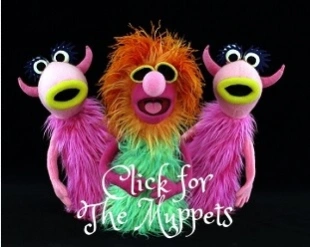


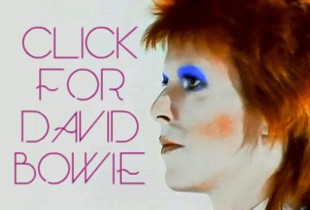


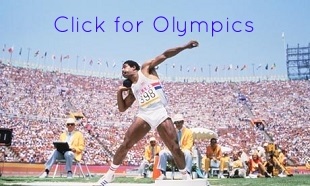
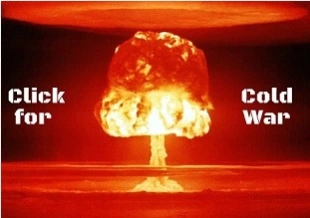
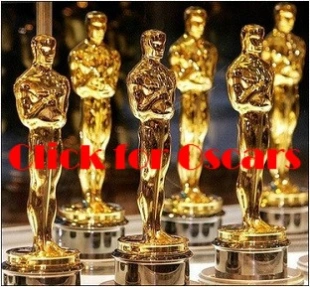

You state, “there’d only ever been two proper James Bonds”.
I disagree. There was ONLY ever ONE James Bond… Sean Connery. If he had the use of all the ‘movie magic’ that his successors have had, he would knock them all into a ‘cocked hat’!
Sean Connery has ALWAYS been a superb actor from “Hell Drivers” in 1957, up to “First Knight” in 1995… and probably beyond, but I cannot remember seeing any of his later films.
The ONLY Bond.